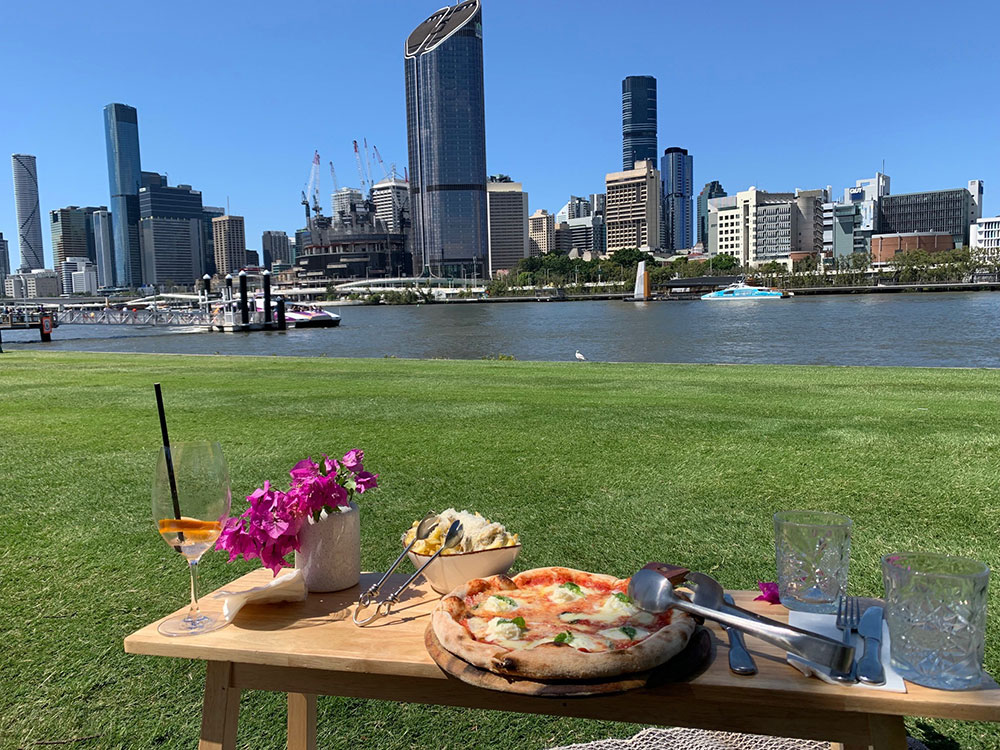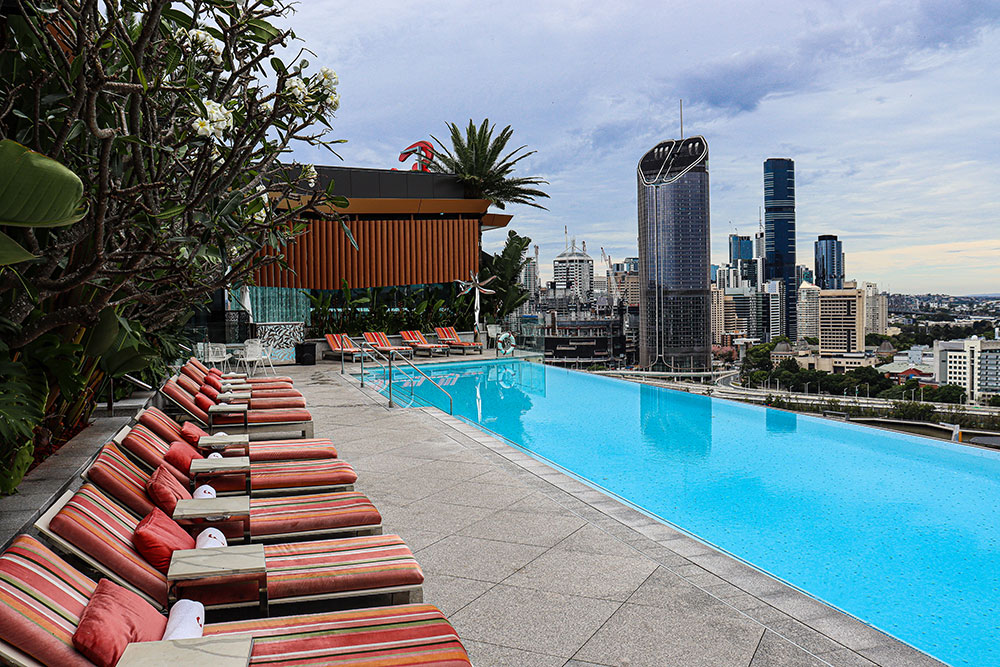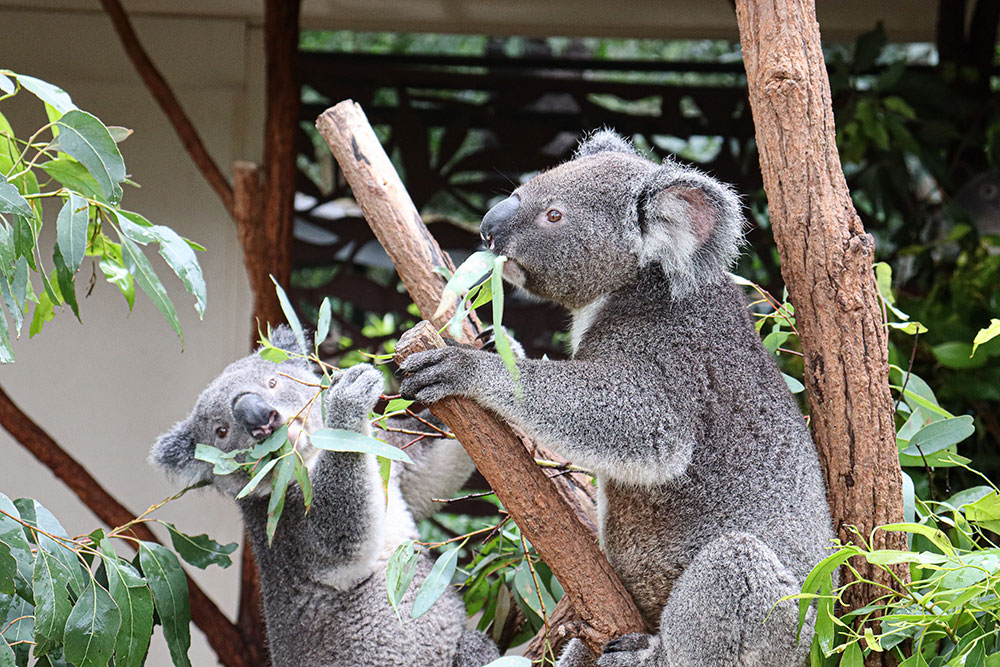Two-day road test for Brisbane app

Brisbane locals stumped for things to do, or visitors looking to make the most of their time now have the option of using the “Brisbane” app to uncover the best of Queensland’s capital.
The app, developed by Brisbane City Council, delivers a convenient way to navigate and experience the city to your mobile and features more than 1680 events and 200 guides created by locals.
This writer “road-tested” the app, following an itinerary titled “The perfect family-friendly staycation”.
The two-day itinerary had a distinct South Bank flavour and started with check-in at the Emporium South Bank on the first morning.
It was too early to go to our room, so we left our bags with reception and set off for our first experience, City Hall.
Be warned. The first day involved a lot of walking, so wear comfortable shoes.
Using the map on the Brisbane app for guidance, we set off on the 25-minute walk along the riverfront and across Victoria Bridge to the CBD and City Hall.
We were booked for a tour of the clock tower, but we detoured to the Museum of Brisbane.

Backyard Bliss by Rachel Burke (2021), Museum of Brisbane.
The museum’s City in the Sun exhibition, which runs until April, caught our attention and is a must-see for all Queenslanders.
The colourful exhibition “uncovers and reimagines” Brisbane’s subtropical image, raising questions about the difference between perception and reality.
It features more than 30 artworks, including eight significant commissioned pieces by local artists.
With time ticking (no pun intended), we headed to the museum’s entry, where we met Brian, our guide on the 15-minute clock tower tour.
Brian loaded three of us into the 1930s-era lift for the trip up the inside of the clock tower to the viewing platform, which is above the clock face and 64m above ground level.
The top of the clock tower is 87m above ground level and when City Hall was opened in 1930, it was the tallest building in Brisbane – a record it held until 1967.
We also learned the tower has four clock faces, each 4.8m in diameter. The hour hands are 1.7m and the minute hands 3m and it was the first fully electric clock in Australia.
Brian lamented that the view was becoming increasingly impeded by high-rise buildings.

In the 1930s, the view was unobstructed to Moreton Bay.
“It’s interesting what you can and can’t see up here these days,’” Brian said.
“You can see a little bit of the Kangaroo Point cliffs, but in the late 1980s, you used to be able to see about six or seven times that amount.
“In those days, too, you could still see some of the steel structure of the Story Bridge.”
Brisbane’s skyline began to change in the late ’90s and early 2000s dramatically.
The tallest building is the 270m, 90-storey Brisbane Skytower, which opened in 2019.
“In 2005, the tallest building in Brisbane was the Riparian Plaza with 53 storeys,” Brian said.
“So, in 15 years, we have gone from 53 storeys to 90 storeys.”
There are now six Brisbane buildings taller than Riparian Plaza.
Visitors can also take a tour of City Hall and learn more about its remarkable history, including fascinating details of its construction.
Bookings are advised for both the clock tower and city hall tours.

We had to skip the City Hall tour as we had a picnic lunch booked with Popolo Italian Kitchen and Bar on the riverbank lawn back at South Bank.
The lunch and refreshing drinks were a great way to catch our breath and recharge ahead of some more walking.
We headed back along the riverfront to tour the Queensland Art Gallery and adjacent Gallery of Modern Art (GOMA).
You can find more information on both galleries on the Brisbane app, which links to their website that details their latest exhibitions.
We spent too long at the Queensland Art Gallery and had to put a visit to GOMA on our to-do list.
Our schedule meant we had to make our way back to Emporium. After checking into our room (A ride in the lifts at Emporium is an experience in itself), we had just enough time to check out the hotel’s rooftop infinity pool and its stunning city views.

For dinner, we kept the Italian dining theme going with a booking at The Spaghetti House Trattoria, a stroll from Emporium.
This popular South Bank restaurant offers a great family dining experience with hearty servings of traditional Italian food.
If you would prefer other options, the Brisbane app can help. Click on the “Places” icon at the bottom of your screen for a selection of cafes and restaurants near your location, which are displayed on a map.
You will find that South Bank has a lot to choose from.
We headed back along the riverfront the next morning, stopping for a delicious breakfast and coffee at Nodo.
Then it was on to the Cultural Centre Pontoon, where we boarded Mirimar II, our transport to Lone Pine Koala Sanctuary, to wrap up our two-day staycation.
Mirimar Cruises began taking people on the 20km journey up the Brisbane River to Fig Tree Pocket and Lone Pine in 1934.
The journey takes about an hour and is a great way to learn more about the history of the river and the suburbs it flows past, courtesy of onboard commentary filled with interesting and fun facts delivered in an unashamedly “ocker” style.
The commentary also gives a perspective of the impacts of Brisbane’s 1974 and 2011 floods, pointing out water levels and the extent of inundation.
.jpg?rev=d0216f4369b44d31b0dcb00e9719beb4&hash=BD39098F411E9FC3C57B005D839E8FC9)
The cruise is also a great way to see some of Brisbane’s most prestigious riverfront properties and learn some of their histories.
We were given three hours at Lone Pine before we had to reboard Mirimar II and head back downriver.
That allowed us enough time to take in all the exhibits at the leafy sanctuary, which is home to about 400 animals, including more than 100 koalas.
A tip for visitors is to be at Lone Pine between noon and 2pm daily when the koalas are given fresh eucalyptus leaves.
It is then that they became very active, feeding on the fresh tips and making a mockery of their reputation for inactivity.

Other highlights were stops at the “nocturnal” platypus exhibit, viewing the seemingly always-cranky Tasmanian devils and the birds of prey show.
With our 2.15pm departure fast approaching, we had time to grab a coffee and some food at the renovated Riverside Cafe, near the sanctuary’s entrance.
We then boarded Mirimar II for the relaxing journey back to the CBD, much richer for experiencing two of Brisbane’s true icons – the river and Lone Pine.
You can download the Brisbane app for free from the App Store or Google Play.
The writer was a guest of Brisbane City Council
RACQ members can get discounted tickets to Lone Pine Koala Sanctuary
Related topics
Things to note
The information in this article has been prepared for general information purposes only and is not intended as legal advice or specific advice to any particular person. Any advice contained in the document is general advice, not intended as legal advice or professional advice and does not take into account any person’s particular circumstances. Before acting on anything based on this advice you should consider its appropriateness to you, having regard to your objectives and needs.
Insurance Products (excluding Travel Insurance) are issued by RACQ Insurance Limited ABN 50 009 704 152 (RACQI) and arranged by its agent, RACQ Distribution Services Pty Ltd (RDS) ABN 35 116 361 650, AFSL 567130 and RDS' authorised representatives (including RACQ Operations Pty Ltd ABN 80 009 663 414, AR No. 234978 (RACQO). Conditions, limits and exclusions apply. RDS and RACQO are in the RACQ group of companies. One of the companies in the RACQ group of companies has a minority shareholding in RACQI.
RDS and RACQO have not taken your personal objectives, circumstances or needs into account when preparing advice regarding insurance products and you will need to consider whether the advice is appropriate for you. Read the Product Disclosure Statement (PDS) and any applicable Supplementary PDS before making a purchase decision on this product. You can also access our Target Market Determinations on this website. RDS receives a commission from RACQI for the policies it arranges. RACQO receives fees paid for services it provides to RDS. Further details about remuneration are available on request prior to purchasing.
Banking and loan products issued by Members Banking Group Limited ABN 83 087 651 054 AFSL/Australian credit licence 241195 trading as RACQ Bank. Terms, conditions, fees, charges and lending policies apply. This is general advice only and may not be right for you. This information does not take your personal objectives, circumstances or needs into account. Read the disclosure documents for your selected product or service, including the Financial Services Guide and the Terms and Conditions, and consider if appropriate for you before deciding.
Except for RACQ Bank, any RACQ entity referred to on this page is not an authorised deposit-taking institution for the purposes of the Banking Act 1959 (Cth). That entity’s obligations do not represent deposits or other liabilities of RACQ Bank. RACQ Bank does not guarantee or otherwise provide assurance in respect of the obligations of that entity, unless noted otherwise.
RACQ Bank subscribes to the Customer Owned Banking Code of Practice which establishes higher standards than the law requires. The Code reflects modern consumer expectations and developments in approaches to issues such as consumer vulnerability, guarantors, and supporting customers through financial hardship. Please read our Customer Owned Banking Code of Practice page for more information.
RACQ Operations Pty Ltd (ABN 80 009 663 414 AR 000234978) and Members Travel Group Pty Ltd (ABN 45 144 538 803 AR 000432492) are acting as an Authorised Representative of the issuer of the insurance, Tokio Marine & Nichido Fire Insurance Co., Ltd. (ABN 80 000 438 291 AFSL 246 548). Any advice set out above is general in nature only, and does not take into account your objectives, financial situation or needs. Before purchasing any travel products, please consider the RACQ Travel Insurance Product Disclosure Statement (PDS) and the Target Market Determinations (TMDs) that apply to these products. Whilst the PDS outlines the Terms and Conditions of these products, the TMDs outline the intended class of customers that comprise the target market for these travel products. This will allow you to consider which products best suit your objectives, financial situation and needs and consider the products appropriateness to your personal circumstances. TMDs also outline matters involving the distribution and the review of these products. The PDS, Supplementary PDS and TMDs for each travel product can be found here.